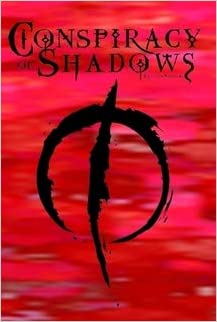I started to feel that I didn’t know roleplaying games well enough so I came up with the plan to read a roleplaying game corebook for every year they have been published. Selection criteria is whatever I find interesting.

Conspiracy of Shadows is a dark fantasy roleplaying game, part of the early Forge scene. It has an Eastern Europe -flavored world and a theme where the characters form a clandestine Cell devoted to stopping the machinations of an evil conspiracy. What the conspiracy is like exactly changes from game to game.
Reading Conspiracy of Shadows feels like spelunking in the subterranean layers of a design tradition that has subsequently evolved quite a lot. The priorities and ideas of where Conspiracy of Shadows came from hadn’t quite solidified yet so some of the game’s design is still presented in terms of advice instead of the all-encompassing system approach that later came to typify these games.
During character creation, each player must choose a Doom for their character. The Doom can be invoked to resolve a situation in favor of the character but doing so increases your Doom rank and once the meter is full the Doom is at hand. The purpose of this mechanic is to simulate the kind of fates characters often suffer in stories about trying to unearth conspiracies.
The character creation system has mechanics for the creation of the Cell, the player character group. For example, their Assets are communal. This kind of group-based approach makes a lot of sense in roleplaying games. It’s been used in a few other games as well but in cases where the player characters are expected to act as a unit it could be much more common than it is.
When it comes to the structure of Conspiracy of Shadows campaigns, the game leans heavily on basic analysis of episodic television such as X-Files. It lifts a lot of concepts and structures wholesale, instructing the GM to apply them to the game they’re running.
There are some tools for applying these ideas to a roleplaying campaign but the approach is still typical of a lot of roleplaying and larp writing in the Nineties and 00’s. At that time, we’d learned to understand narrative structures but hadn’t yet quite grasped how they should be adapted to the specific demands of roleplaying as a participatory medium.
One example is in how villains should be used. Conspiracy of Shadows has a taxonomy of villain types helpful on creating interesting villains that work well as long as they get enough screen time for the players to understand what they’re all about. In a roleplaying game, showcasing the special nature of the villain requires different tools than doing it in a television show but the thinking here is not quite there yet.
That’s not a knock on Conspiracy of Shadows. It’s typical of an era, and collectively this game was part of the creative ferment that fostered a lot of development with these issues in later years.